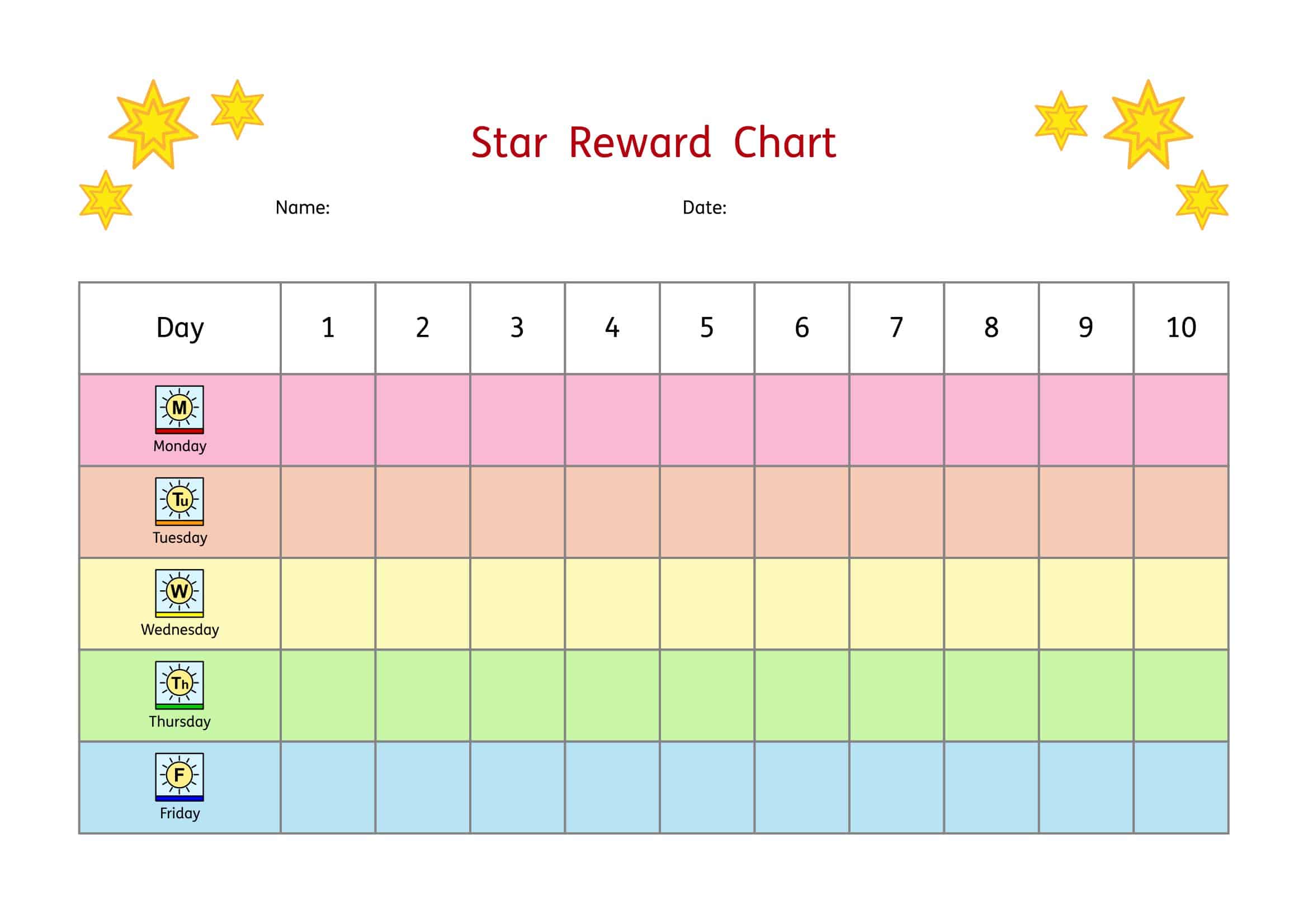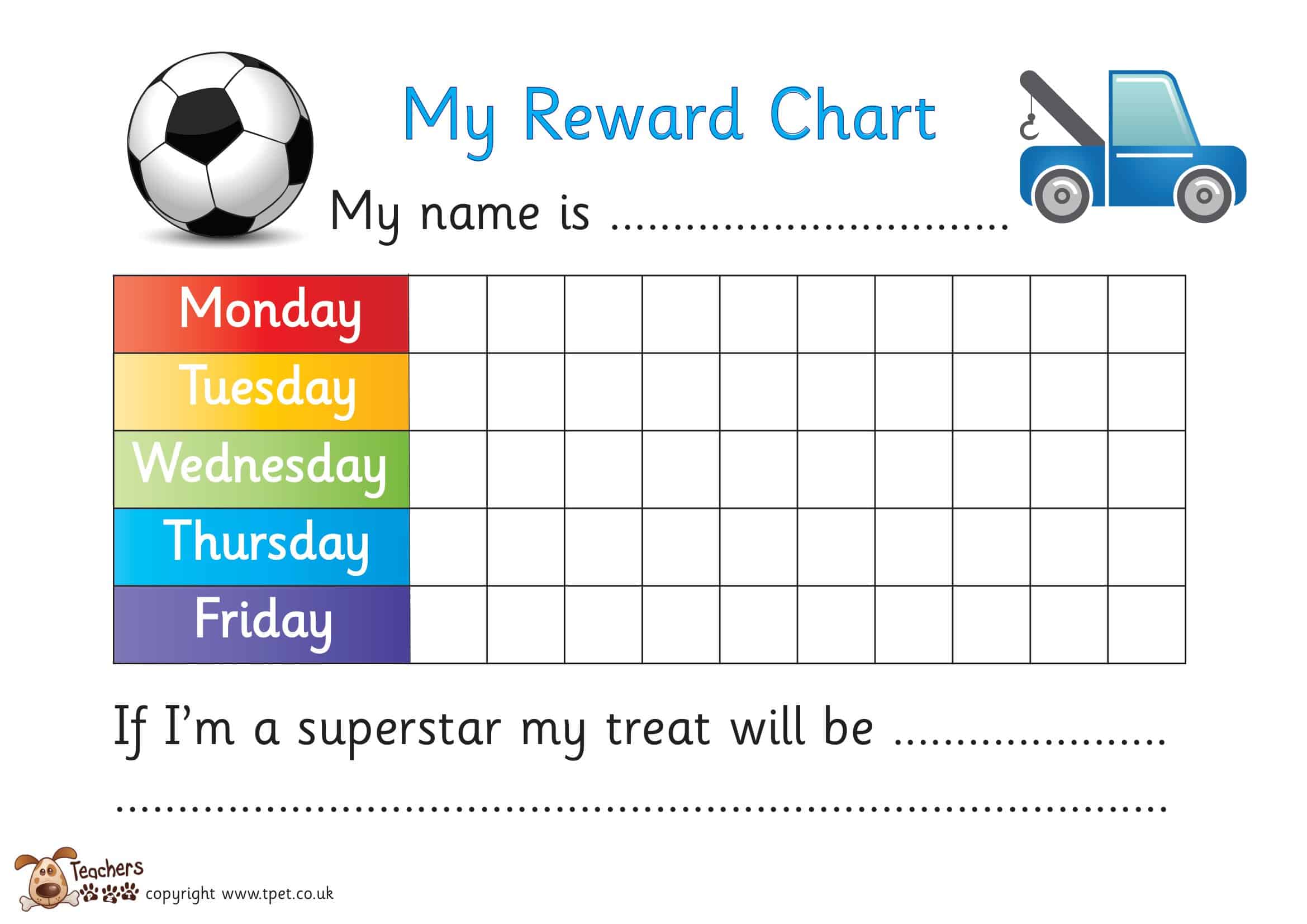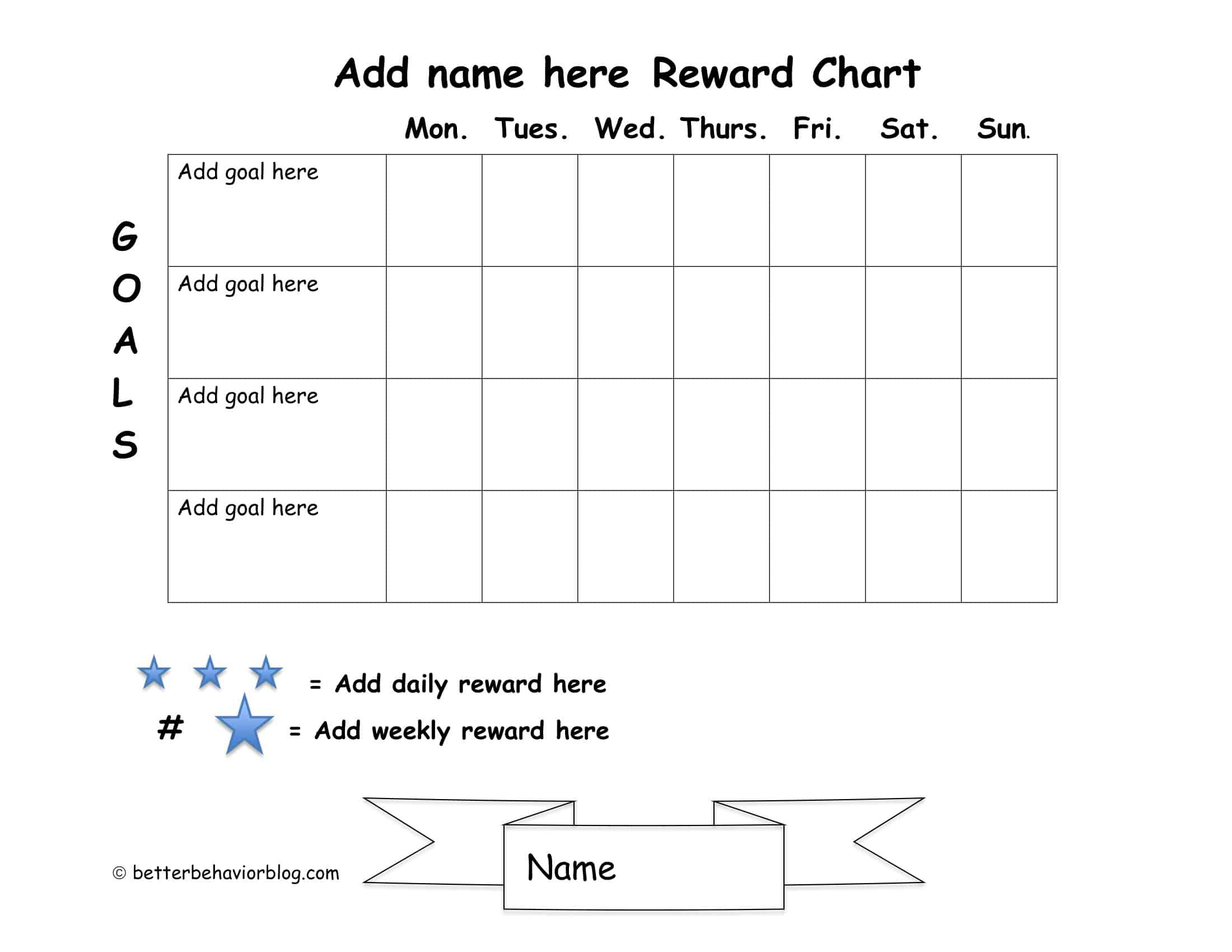A reward chart is a powerful tool for encouraging positive behavior and promoting good habits. Whether you’re a parent looking to encourage your child to do their homework, a teacher seeking to motivate your students, or a manager trying to improve team performance, a reward chart can help you achieve your goals.
The basic principle behind a reward chart is simple: by providing positive reinforcement for desired behaviors, you can encourage those behaviors to become habitual. However, to be effective, a reward chart must be used correctly. This article will guide you through the process of creating and using a reward chart, so you can get the most out of this powerful tool.
Table of Contents
Reward Chart Templates
Reward Chart Templates are useful tools designed to motivate and track progress for individuals, particularly children, in achieving specific goals or desired behaviors. These templates provide a structured framework for setting goals, tracking accomplishments, and providing rewards or incentives for positive actions or achievements. They serve as visual aids to encourage consistency, monitor progress, and reinforce positive behaviors or habits.
Reward Chart Templates can be designed in various formats, such as printable sheets, digital graphics, or interactive applications. They provide a structured framework for individuals to set and work towards their goals while providing a visual representation of progress and motivation through rewards. By utilizing Reward Chart Templates, individuals can cultivate positive behaviors, develop good habits, and experience a sense of accomplishment as they achieve their targets. These templates serve as valuable tools for promoting motivation, self-discipline, and personal growth.
How do reward charts work?

Reward charts work by providing positive reinforcement for desired behaviors. The basic principle behind a reward chart is that when an individual engages in a desired behavior, they are provided with a reward. Over time, the individual begins to associate the desired behavior with the reward, and the behavior becomes more likely to be repeated.
There are several key elements to a reward chart that make it effective:
Clearly defined goals: The desired behaviors that will be rewarded must be clearly defined and understood by the individual using the chart.
Consistent tracking: The individual’s progress towards the desired behavior must be tracked consistently, so they can see the progress they are making and the rewards they are earning.
Immediate rewards: The rewards must be provided immediately after the desired behavior is exhibited, so the individual can make the connection between the behavior and the reward.
Graduated rewards: The rewards should start small and increase in value as the individual reaches certain milestones, to keep them motivated to continue working towards the desired behavior.
Positive reinforcement: The rewards should be positive, such as praise or a small treat, to reinforce the desired behavior.
Positive feedback: The individual should be given positive feedback for their efforts and progress.
When used correctly, a reward chart can be a powerful tool for promoting positive behavior and encouraging good habits.
Benefits of using Reward Charts
There are many benefits to using reward charts, including:
Encourages positive behavior: By providing positive reinforcement for desired behaviors, reward charts can encourage those behaviors to become habitual.
Improves motivation: Reward charts help individuals see the progress they are making and the rewards they are earning, which can increase motivation to continue working towards desired behaviors.
Helps to set and achieve goals: Reward charts can be used to set specific goals and track progress towards achieving those goals, providing a sense of accomplishment and satisfaction.
Builds self-esteem: As individuals see the progress they are making and the rewards they are earning, it can boost self-esteem and self-confidence.
Increases communication: Reward charts can be used as a tool for communication between parents, teachers, and managers to discuss goals and progress, and to provide feedback and support.
Enhances accountability: Reward charts provide a visual representation of progress and hold the individual accountable for their actions.
Suitable for all ages: Reward charts can be used for children, teenagers, and adults and can be customized to suit the individual’s needs and goals.
Cost-effective: Reward charts are a cost-effective way to encourage positive behavior, as rewards can be small and simple, such as stickers or small treats.
Can be used in different settings: Reward charts can be used in different settings, including at home, school, and work, making it a versatile tool.
How to make a reward chart?
Creating a reward chart is a simple and effective way to promote positive behavior and encourage good habits. Here are the steps to creating a reward chart:
Define the desired behavior: The first step in creating a reward chart is to clearly define the desired behavior you want to encourage. This could be anything from completing homework on time, to getting dressed quickly in the morning, to meeting a sales goal at work. Be specific and measurable when defining the behavior.
Decide on rewards: Once you have defined the desired behavior, decide on the rewards that will be provided for achieving that behavior. Rewards can be simple and inexpensive, such as stickers, small toys or treats, or a privilege such as extra screen time or a special outing. You can also use graduated rewards, starting with smaller rewards for small achievements and working up to larger rewards for achieving bigger milestones.
Choose a format: Decide on the format of your reward chart. You can make a chart on paper, use a whiteboard or a dry-erase board, or use a digital platform. The important thing is that it should be easily visible and accessible to the individual using the chart.
Create the chart: Once you have chosen a format, create the chart. Include the desired behavior, the rewards, and the milestones or steps that will be required to achieve the behavior. Use visual elements such as pictures or illustrations to make the chart more appealing and engaging.
Set a timeframe: Decide on a timeframe for achieving the desired behavior and milestones. This could be a day, a week, or a month, depending on the behavior and the individual’s progress.
Communicate the chart: Make sure the individual using the chart understands the desired behavior, the rewards, and the timeframe. Communicate the chart to parents, teachers or managers, if necessary, so everyone is on the same page.
Track progress: Consistently track the individual’s progress towards achieving the desired behavior. Use the chart to mark off milestones or achievements as they are reached.
Provide immediate rewards: Provide rewards immediately after the desired behavior is exhibited. This helps the individual make the connection between the behavior and the reward and reinforces the behavior.
Give positive feedback: Give positive feedback for the individual’s efforts and progress. This can include verbal praise, a pat on the back, or a hug.
Review and adjust: Review the progress and make adjustments as needed. If the individual is not making progress, consider adjusting the desired behavior, rewards, or timeframe.
Tips for using your reward chart effectively
Tailor the chart to the individual: Make sure the desired behavior, rewards, and milestones are appropriate for the individual’s age, ability, and interests.
Keep it simple
Don’t try to change too many behaviors at once, or set unrealistic goals. Start with one or two desired behaviors and work on them consistently.
Be consistent
Use the chart consistently, and make sure the individual is aware of the rules and rewards.
Be positive
Use positive reinforcement and feedback to encourage the desired behavior. Avoid criticism or punishment.
Involve the individual
Involve the individual in creating the chart and in setting goals. They will be more invested in the process and more motivated to achieve the desired behavior.
Graduated rewards
Graduated rewards that increase in value as the individual reaches certain milestones will keep them motivated to continue working towards the desired behavior.
Keep the rewards relevant
Rewards should be relevant to the desired behavior and should be something that the individual values.
Avoid rewards that undermine the desired behavior
Rewards such as candy or screen time may undermine the desired behavior in the long run.
Be patient
It takes time for a reward chart to be effective, so don’t get discouraged if the desired behavior doesn’t change immediately.
Make it fun
Make the chart fun and engaging. Use pictures, illustrations, stickers, or other visual elements to make it more appealing.
By following these tips, you can use your reward chart as a positive tool to promote positive behavior and encourage good habits.
FAQs
What are some examples of tasks or behaviors that can be included on a reward chart?
Examples of tasks or behaviors that can be included on a reward chart include things like making their bed, brushing their teeth, doing homework, being kind to others, or staying in their own bed all night.
What kind of rewards can be given for completing a reward chart?
Rewards can be anything that the child finds motivating. This can include treats like candy or ice cream, small toys or trinkets, or even special privileges like staying up late or choosing a family movie night.
How long should it take for a child to complete a reward chart?
The length of time it takes for a child to complete a reward chart will vary depending on the child and the tasks or behaviors included on the chart. Some charts may be completed in just a few days, while others may take a week or longer.
Can reward charts be used for adults too?
Yes, reward charts can be used for adults as well. The tasks or behaviors and rewards may be different, but the basic concept is the same.
























































![Free Printable Pie Chart Templates [Excel, PDF, Word] Maker 1 Pie Chart](https://www.typecalendar.com/wp-content/uploads/2023/06/Pie-Chart-150x150.jpg 150w, https://www.typecalendar.com/wp-content/uploads/2023/06/Pie-Chart-1200x1200.jpg 1200w)
![Free Printable Roommate Agreement Templates [Word, PDF] 2 Roommate Agreement](https://www.typecalendar.com/wp-content/uploads/2023/06/Roommate-Agreement-150x150.jpg)
![Free Printable Credit Card Authorization Form Templates [PDF, Word, Excel] 3 Credit Card Authorization Form](https://www.typecalendar.com/wp-content/uploads/2023/06/Credit-Card-Authorization-Form-150x150.jpg)
